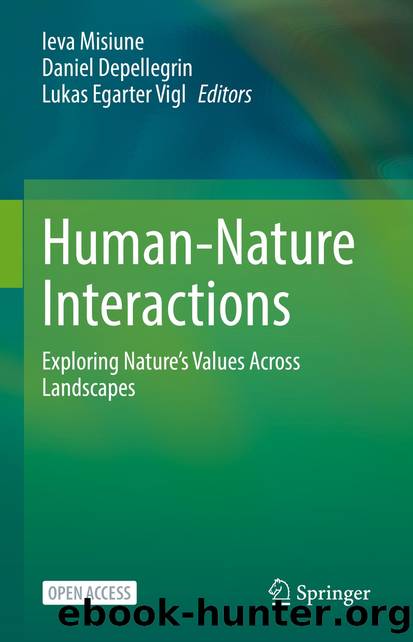Human-Nature Interactions by Unknown

Author:Unknown
Language: eng
Format: epub
ISBN: 9783031019807
Publisher: Springer International Publishing
(ii)
Which ecosystem services and disservices are delivered by riverbeds to residents, and how do these differ across neighbourhoods?
(iii)
How do access and management of riverbeds vary across the city neighbourhoods?
(iv)
How do historical legacies, peopleâs preferences and potential ecosystem disservices influence the implementation of Nature-based Solutions such as green infrastructure?
2 Methods
2.1 Case Study of Windhoek, Namibia: An Arid, Post-Apartheid City
Windhoek is the capital city of Namibia, a country of 2.6 million people in south-west Africa which spreads across the Namib Desert and the semi-arid savannah of the Kalahari. Historically, Namibia was a German and then a British colony, administered by South Africa from the end of the First World War until its independence in 1990. Namibian citizens were therefore subject to apartheid laws between the 1950s and the 1990s. Since independence, the growth of informal settlements (or peri-urban areas or slums) and the rate of urbanisation has accelerated, as people from rural areas arrived in the city in search of employment and education opportunities (Weber & Mendelsohn, 2017). With predicted warming, drier conditions, and increased variability in the spring rainfall, internal rural-urban migration is likely to grow as people move away from subsistence farming and pastoral lifestyles (Niang et al., 2014). In 2019, 49% of the population lived in urban areas, 31.5% of which lived in Windhoek, the biggest city of the country which had 404,280 inhabitants in 2018 (Ritchie & Roser, 2019). Windhoek developed on a flood plain and the surrounding hills, in a plateau ranging between 1200â1700 m.a.s.l. in the central region of the country. Every summer growing water demand, coupled with recurrent nationwide droughts, puts the city under stress. Two main river systems run through the city (Gammans and Arrebusch) and collect the seasonal storm water from the surrounding hills into three city dams. Despite the ephemeral nature of the river network, riverbeds have the potential to foster NbS, supporting most of the cityâs greenery and hosting perennial trees, bushes and grasses adapted to arid conditions (e.g., acacia trees, trumpet thorn trees, dwarf shrub species) (Mendelsohn et al., 2002), (Fig. 17.1).
Fig. 17.1(a) Riverbeds in Klein Windhoek, a wealthier area of the city with more green spaces along riverbeds (Van Rooy et al., 2006). (b) An interviewee of Khomasdal, the formerly coloured neighbourhood, showing us the riverbeds behind his house. (c) The âUnited Nations Plazaâ city park in Katutura, which is a green space developed around a river section in the former black neighbourhood after independence, and frequently used for picnics, letting children play, taking photos and relaxing. (d) The first author interviewing residents of Okuryangava, an informal settlement with fewer green spaces along riverbeds. Behind interviewees, trees along the river can be seen, used for shade, as meeting areas, and for selling camelthorn pods for fodder. (Photo source: V. Giombini)
Download
This site does not store any files on its server. We only index and link to content provided by other sites. Please contact the content providers to delete copyright contents if any and email us, we'll remove relevant links or contents immediately.
Kathy Andrews Collection by Kathy Andrews(10521)
The remains of the day by Kazuo Ishiguro(7551)
Spare by Prince Harry The Duke of Sussex(4199)
Paper Towns by Green John(4169)
The Body: A Guide for Occupants by Bill Bryson(3802)
Be in a Treehouse by Pete Nelson(3214)
Harry Potter and the Goblet Of Fire by J.K. Rowling(3046)
Goodbye Paradise(2964)
Never by Ken Follett(2883)
Into Thin Air by Jon Krakauer(2703)
The Remains of the Day by Kazuo Ishiguro(2620)
The Genius of Japanese Carpentry by Azby Brown(2609)
The Cellar by Natasha Preston(2595)
Drawing Shortcuts: Developing Quick Drawing Skills Using Today's Technology by Leggitt Jim(2532)
120 Days of Sodom by Marquis de Sade(2439)
Architecture 101 by Nicole Bridge(2351)
The Man Who Died Twice by Richard Osman(2300)
Machine Learning at Scale with H2O by Gregory Keys | David Whiting(2293)
Fairy Tale by Stephen King(2071)
